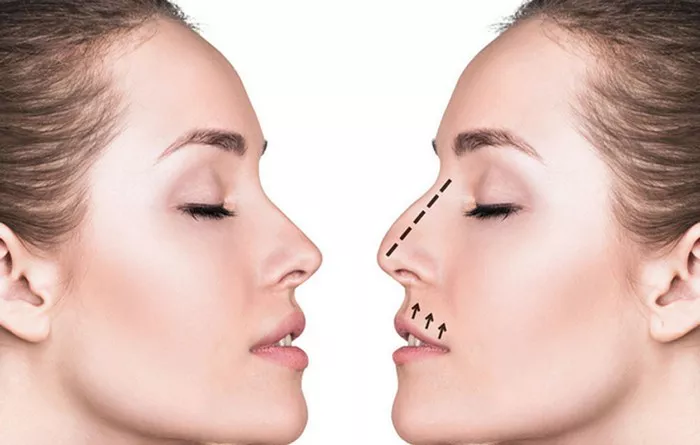Rhinoplasty, commonly known as a nose job, has been a popular cosmetic procedure for many years. However, a less invasive option, nose fillers, has gained popularity due to its quick results and minimal downtime. Despite their appeal, nose fillers carry significant risks that patients should be aware of before undergoing the procedure. This article will explore 7 reasons why nose fillers are dangerous.
1. Risk of Vascular Complications
Vascular Occlusion
One of the most serious risks associated with nose fillers is vascular occlusion. This occurs when the filler material inadvertently enters a blood vessel, blocking blood flow. The nose is a highly vascular area, and any disruption to its blood supply can lead to severe complications.
Tissue Necrosis
If vascular occlusion is not promptly addressed, it can result in tissue necrosis. Tissue necrosis is the death of tissue due to a lack of blood supply, which can cause permanent damage to the nose. This complication requires immediate medical intervention to prevent significant tissue loss.
2. Infection Risk
Introduction of Bacteria
Any procedure that involves breaking the skin carries a risk of infection. During a nose filler procedure, bacteria can be introduced into the injection site, leading to an infection. Even with sterile techniques, the risk remains, as the nose is naturally colonized by bacteria.
Severe Infections
In some cases, infections can become severe, leading to abscess formation or cellulitis. Severe infections may require antibiotics or even surgical intervention to drain the abscess and remove infected tissue. The consequences can be both physically and emotionally distressing for the patient.
3. Allergic Reactions
Hypersensitivity
Patients may experience allergic reactions to the filler material. These reactions can range from mild to severe. Symptoms of an allergic reaction include redness, swelling, itching, and in rare cases, anaphylaxis, a life-threatening condition that requires immediate medical attention.
Delayed Onset Reactions
Allergic reactions may not always occur immediately. Delayed onset reactions can develop weeks or even months after the procedure. This unpredictability adds an additional layer of risk for patients considering nose fillers.
See Also: 6 Ways to Reduce Swelling After Rhinoplasty
4. Asymmetry and Aesthetic Issues
Uneven Results
Achieving perfect symmetry with nose fillers can be challenging. Uneven distribution of the filler can lead to asymmetrical results, which may be aesthetically unpleasing. Correcting these issues often requires additional treatments or procedures, increasing the overall risk and cost for the patient.
Migration of Filler Material
Filler material can migrate from the original injection site. This migration can cause lumps, bumps, or distortions in the shape of the nose. Such outcomes can be distressing for patients seeking improvement in their appearance and may necessitate further corrective procedures.
5. Temporary Results
Short Duration of Effect
Nose fillers offer temporary results, typically lasting between 6 to 18 months, depending on the type of filler used. Patients seeking long-term changes will need repeated treatments. Each treatment carries its own set of risks, compounding the danger over time.
Cumulative Risks
With each repeated procedure, the cumulative risk of complications increases. Frequent injections can lead to scar tissue formation, changes in skin texture, and an increased risk of the aforementioned complications such as vascular occlusion and infection.
6. Limited Scope of Correction
Minor Adjustments Only
Nose fillers are best suited for minor adjustments and may not be able to address significant structural issues. Patients with more complex nasal deformities may be dissatisfied with the limited results that fillers can provide, and may eventually need surgical intervention.
Unrealistic Expectations
Patients may have unrealistic expectations about what nose fillers can achieve. The inability to meet these expectations can lead to dissatisfaction and regret. Proper patient education and realistic goal setting are crucial, but even with this, not all patients will be pleased with the results.
7. Psychological Impact
Patient Dissatisfaction
Dissatisfaction with cosmetic outcomes can have a significant psychological impact. Patients may experience anxiety, depression, or a decrease in self-esteem if the results do not meet their expectations. The emotional toll of a less-than-ideal outcome should not be underestimated.
Decision Regret
Some patients may regret their decision to undergo nose filler treatments, particularly if they experience complications or are unhappy with the results. This regret can lead to further psychological distress and a negative perception of their self-image.
Conclusion
While nose fillers offer a less invasive alternative to traditional rhinoplasty, they come with significant risks that must be carefully considered. Vascular complications, infection, allergic reactions, asymmetry, temporary results, limited scope of correction, and psychological impact are all serious concerns. Patients should thoroughly discuss these risks with a qualified healthcare provider and weigh the potential benefits against the dangers. Making an informed decision is crucial to ensure the best possible outcome and to minimize the risk of complications.
Related topics:


